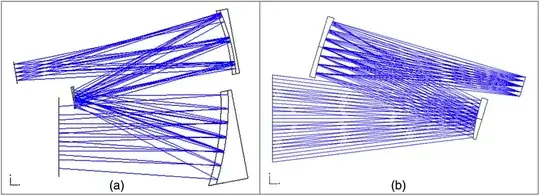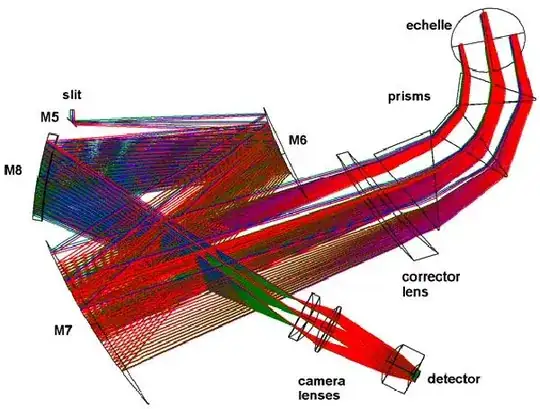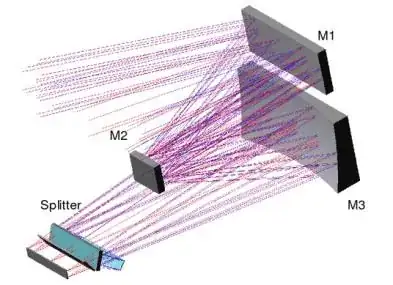To supplement @CarlWitthoft's insightful answer I'll mention some links related to off-axis operation:
The last of which says:
The Nancy Grace Roman Space Telescope, formerly named the Wide Field Infrared Survey Telescope (WFIRST), employs a folded three-mirror anastigmat featuring an ellipsoidal primary, hyperboloidal secondary, and ellipsoidal tertiary.9 An earlier design used an off-axis three-mirror anastigmat.10
9Pasquale, Bert A.; et al. (17 September 2018). "Optical Design and Predicted Performance of the WFIRST Phase-B Imaging Optics Assembly and Wide Field Instrument". Conference Proceedings of the SPIE. 107450K. doi:10.1117/12.2325859
10Content, D.A.; Goullioud, R.; Lehan, J.P.; Mentzell, J.E. (14 September 2011). "Optical design trade study for the Wide Field Infrared Survey Telescope [WFIRST]" (PDF). Conference Proceedings of the SPIE. 8146. doi:10.1117/12.898528.
So in an alternate timeline the Nancy Grace Roman Space Telescope might have been exactly as you propose, without any secondary obstruction!
We can certainly point to the GAIA space telescope as a completely unobstructed view off-axis telescope, and this is likely of absolute necessity! In order to make extremely precise astrometric measurements of millions of relative star positions some of which are in dense neighborhoods, it's important to have very very clean point spread functions without zillions of overlapping diffraction spikes.
From this answer to Why does the Gaia space telescope have two main mirrors:

above: GAIA's Silicon Carbide Optical Bench, with the two objective mirrors of it's twin telescopes pointing 106.5° apart. From Spaceflight 101, image credit: ESA/Astrium.
Some examples of three mirror anastigmat-type layouts:

(a) Layout of a F4 Three-Mirror Anastigmat (TMA) design that resembles the Cook design with the freeform primary, spherical secondary, and tertiary. It has a field-of-view (FoV) of 8 deg ×12 deg (the initial design with three conical sections provides 8 deg ×8 deg FoV). (b) Layout of the freeform based two-mirror system (10 deg ×10 deg).
I don't know about instrumentation attached to space telescopes (some drawings of systems aboard Hubble in this answer to Where exactly is the modification that first corrected the spherical aberration in Hubble's primary mirror? include on-axis internal "telescopes" which change divergence and magnification) but spectrometers will often use off-axis transfer optics. Here's an extreme example from Why does X-shooter use double passes through prisms for Echelle cross-dispersion instead of gratings? which references X-shooter, the new wide band intermediate resolution spectrograph at the ESO Very Large Telescope:
Figure 6. shows the NIR spectrograph. "Double pass" means the light passes through the prisms going towards the Echelle and again after being back-diffracted. That's twelve additional optical surfaces!

Figure 6. The NIR spectrograph optical layout.
See also Sentinel-2: Multispectral Instrument (MSI) design and system performance (also here):

Layout of the Three-Mirror Anastigmat (TMA) telecentric mirrors and dichroic beam splitters for VNIR and SWIR spectral bands.




